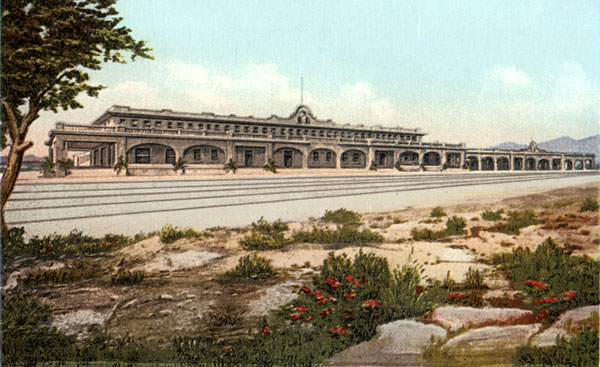

Unfortunately, it was during this time that the historic Escalante Hotel was demolished. Bypassing the community was yet another blow to the local economy, which has never fully recovered. Another large fire, known locally as the “Big Fire,” devastated the community on November 20, 1977, destroying most downtown businesses.Īt the same time, I-40 was being built, closely following Route 66, except for the stretch between Ash Fork and Kingman, where Route 66 took a more northerly, less direct route. Not many years later, in 1960, the Santa Fe Railroad moved its main line north and away from Ash Fork, resulting in the town losing nearly half its population.
#Ash fork az upgrade
Later, when the Mother Road received an upgrade to a divided highway, it destroyed many storefronts, sidewalks, and residential streets.Īs automobile travel increased, the beautiful Escalante Hotel closed down in 1948. The new highway also boosted the town’s economy. When Route 66 came through, the Fred Harvey Escalante Hotel and restaurant catered to highway and railroad travelers.

The site of the Escalante Hotel in Ash Fork, Arizona, by Kathy Alexander. It also sported a large curio shop, newsstand/reading room, and a barbershop. It featured a lunchroom fitted with a circular counter on the ground floor, complete with the ever-popular Harvey Girls. The large hotel and restaurant measured 420 x 200 feet and cost about $115,000. Opening on March 1, 1907, it was built of steel and concrete in the Mission Style of Spanish architecture. Before long, citizens proclaimed the town the “Flagstone Capital of the World.”Īs the railroad became more popular, the Fred Harvey Escalante Hotel was built in 1907. The stone industry remained profitable, and many stones were used to rebuild much of the town. However, it was soon rebuilt on the other side of railroad tracks, where it continues to stand today. Unfortunately, in 1893 the entire town of Ash Fork burned to the ground. Several are said to have been hanged from an Ash Tree.

With so many rowdy men, chaos reigned supreme, and as a result, several citizens in the small settlement organized a vigilance committee to get rid of them. Local flagstone was soon quarried for the railroad to build bridges, and private industry began shipping stone for public buildings, churches, and office buildings.ĭuring its earliest days, Ash Fork, like many railroad towns across the region, was mainly called home to railroaders and cowboys when there was no “official” law and order. The railroad also spearheaded the stone industry. The railroad’s arrival also opened up the area to cattle and sheep ranching. Kline serving as the first Postmaster, and two years later, Wells Fargo opened an office. In April 1883, Ash Fork gained its own post office, with Henry W. The same year the railroad arrived - 1882, Thomas Cooper Lewis opened the town’s first business. Later highways, including Route 66, would be paved across portions of this historic trail. Beale, a crew of 100 men and 22 camels, built the first federal highway in the southwest - the Beale Wagon Road. According to AreaVibes the crime rate in Ash Fork is a whopping 96% above the national average.Though this “primitive” terrain had been crossed since the early 1800s by fur trappers and traders on their way from Santa Fe, New Mexico, to Los Angeles, California, the trails were in poor condition, and the region was known to be wild, unexplored, and dangerous. Nearly 63% of Ash Fork residents live below the poverty line. However, the low median income is coupled with relatively low costs of living in the northwest United States and a low house value. According to CityData, the median household income in Ash Fork is just $28,751 compared to the Arizona average of $51,492.
#Ash fork az drivers
Unfortunately, due to the I-40s creation, many drivers now bypass the small town as they seek more efficient travel. This has drastically effected the economy of Ash Fork. This highway greatly benefited the business owners of the small town, as tourists began to stop in Ash Fork during their excursions across the West. The Santa Fe Railroad provided a descent amount of pedestrian traffic in the late 19th and early 20th century. Locomotive and horse were the only ways to travel to and from Ash Fork until the paving of historic US Route 66 in 1948. Founded as a railroad town in 1882, Ash Fork received its rather unique name due to a railroad General Superintendent discovering a thicket of ash trees near the railroad tracks. The town of just 396 (2010) residents boasts the claim as "The Flagstone Capital of the World" with its concentrated amount of quarries located around the area. Ash Fork is an extremely small town located in the northwestern part of Yavapai County.


 0 kommentar(er)
0 kommentar(er)
